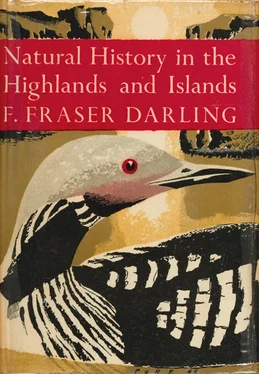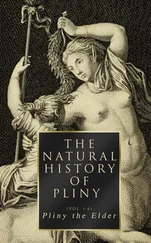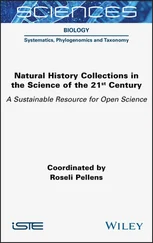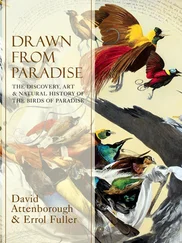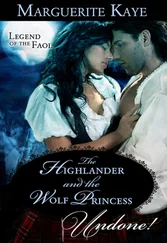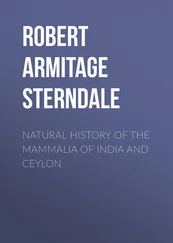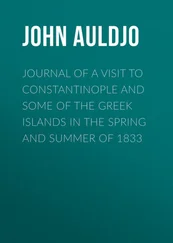West again, we come into the Forest of Glenartney with its two sharp peaks of Ben Vorlich, 3,224 feet, and Stuc a’ Chroin, 3,189 feet, which are visible from Arthur’s Seat, Edinburgh. Glenartney is the most southerly of the deer forests proper, and though the high country of the two peaks is very suitable for deer, the winter trek of the animals makes the forest harder and harder to maintain in an age when the voice of agriculture is clamant.
The country now is getting much wilder and the easily walked slopes of good heather are giving way to some bare rock faces, to wetter sedgy hills and birch woods rather than conifers. Such is the country either side of Loch Lubnaig where the Forestry Commission is changing the face of the hillsides. The varied scheme of plantings here can serve as a model to confound those who hold that forestry spoils scenery. The same kind of country exists in the Trossachs round Loch Katrine of tourist fame. A Highlander hesitates to call the Trossachs Highland but there is no doubt of the beauty of the scenery. Birch and oak woods line the shore of the loch and hold a good number of black grouse still.
We now come to Loch Lomond, beginning at the foot of Glen Falloch as a narrow and quite uninteresting loch. It becomes more impressive the farther south we go down its twenty-odd miles. The shores are fringed with birches and oaks, and on the west bank particularly there are some fine groups of deciduous trees. Spring and autumn in this region have a charm beyond that of many Highland areas—and autumn, be it known, is a time when Scotland is at her most magnificent. If Ben Lomond looks splendid seen across the loch from Tarbet or Luss, a still finer view can be obtained from the other side where there is no road except the transverse one from Loch Katrine to Inversnaid Lodge, which can be reached also from Aberfoyle. The view westwards from above Inversnaid includes a group of “Munros” 1 draining to Loch Sloy—Ben Vorlich (another of the name) with its two peaks, and Ben Vane and Ben Ime. This is the scene of a hydro-electric project and a road is to be made into the area which will certainly allow more people to see the fine scenery than have been able heretofore. This group of hills is in the West of Scotland fair and square and has a high rainfall. The most southerly of the group is Ben Arthur (the Cobbler), 2,891 feet, where there is much bare rock and excellent climbing. At the foot of the sedgy slopes of this hill we are on the west coast at the head of Loch Long. The role of frontier zone is practically lost here, for there is not the rich agricultural land immediately to the south. There is water, and, as the foot of Loch Lomond is reached, the industrial area which is but an extension of Glasgow.
Glasgow is fortunate in its landowners to the north. On both sides of Loch Lomond fair access is given to all, and every attempt is made to preserve the natural woodland and the forest fauna. The Loch Lomond-Trossachs area has priority as a projected national park area. The area would link up with the National Forest Park already established by the Forestry Commission west of Arrochar, and which now includes the privately-given peninsula between Loch Goil and Loch Long. This extremely broken stretch of Highland country, ironically called Argyll’s Bowling Green, is within a few miles of the busy industrial Clyde. The establishment of a national park, and the faithful implementation of the Town and Country Planning Act which is now in force in Scotland, should ensure to Glasgow an area of pristine beauty with a rich natural history, much of which yet awaits patient investigation.
THE CENTRAL HIGHLAND ZONE
This area gives the nearest approach to continental and alpine conditions that we have in Scotland. The southern boundary may be made a line drawn from Lochnagar to the head of Loch Lomond, including the high hills on the north side of Loch Tay. The western boundary would be a line from Loch Lomond through Ben Nevis to Carn Eige and Mam Soul, thence almost due east across the Great Glen at a point just south of Urquhart Castle. This northern line would continue from that point to Tomintoul, one of the highest inhabited villages in Scotland, at 1,280 feet; and the line from Tomintoul to Lochnagar could well form the short eastern boundary. The south-western and north-western corners of this arbitrarily delimited zone are the least typical, in that they lose the plateau-like quality of the Central Highlands proper, but on reflection I should not like to include the peaks round the head of Glen Lyon in the West Highland zone, nor do I think the triangle of country north of the Great Glen may rightly be said to have the sub-arctic-heath complex of vegetation like that of the Northern Highlands. Between 80 and 90 per cent of the ground in this central zone is above the 1,000-foot contour. Arable farming is scarcely practised except in the narrow straths. The farms of Glen Moriston constitute one of the incongruities of the north-western corner of our area, much more so than those of Cromdale and Boat of Garten on the northern edge east of the Spey, for these latter are typical upland farms. The slopes of the hills are mainly of good heather and after 2,500 feet become alpine desert.
The Central Highland zone has its particular interest for naturalists who may be specialists in some branches. There is the botanical field of the high tops, among which Ben Lawers, 3,984 feet, has always held a special place. The schistose of which this hill is composed breaks down easily, and there are exposures of other rocks as well, providing soil which allows a greater variety of alpine plants to grow than on some other summits. The richness of Ben Lawers is also due, probably, to the likelihood of the summit escaping the last glaciation.
The Cairngorm region is of special interest to ornithologists wishing to study the snow bunting and dotterel. The ptarmigan (Plate XVIIb) is common there and the golden eagle (Plate XIIIa) enjoys practical sanctuary, for even sheep-farming is absent from much of the area. The Cairngorm tops are our most considerable arctic relic. The ancient pine forests at the eastern and north-western foot of the Cairngorms are also a relic of a past age and contain the Scottish crested tit (Plate XV) and the Scottish crossbill. The entomologist also finds these forests of special interest. The central Highland area contains some of the biggest deer forests in Scotland, such as Blackmount in Breadalbane of over 80,000 acres (Pl. XV, p. 108), the Forest of Mar, which is almost as large, and the wonderful deer country between Loch Ericht and Loch Laggan, which includes Ben Alder, 3,757 feet.
Our central zone holds the upper reaches of three large river systems—the Dee which flows eastwards from the Cairngorms and the Grampians; the Spey which rises from tiny Loch Spey in the Corrieyairick Forest north of the high top of Creag Meagaidh above Loch Laggan; and the Rivers Garry, Tummel and Tay flowing southwards, joining and continuing as the Tay outside the central alpine zone. The much shorter River Spean which flows westward from Loch Laggan has now disappeared because of the erection of a hydro-electric dam and aqueducts at the foot of Loch Laggan. The Spey, rising at 1,142 feet on the backbone of Scotland, runs 120 miles in a north-easterly direction to the sea in the Moray Firth. It gathers its waters from the Monaliadh hills, from the Grampians and the Cairngorms, the largest area of long-snow-lying country in the Highlands. The River Truim, the Spey’s first large tributary, runs through Badenoch, one of the barest parts of the Highlands. It rises near the Pass of Drumochter, 1,500 feet, which takes the main road from Perth to Inverness. Badenoch has the appearance of a devastated countryside; an appearance partly due to nature and partly to the destructive hand of man several hundred years ago. This area was fought over many a time and bands of broken men were burnt out of their retreats just as the last wolves were a century or two later. The rock is a dull grey and apt to break down into a shaley scree. To my mind, the Forests of Drumochter and Gaick, a little to the east, are the most depressing part of the Highlands. The hills are big humps without individuality, there are screes but not fine cliff faces, and trees are few and far between. Even the weather has a habit of being leaden. The practice of burning heather is always obvious in that no hill face seems to bear an unbroken dark green surface of untouched heather.
Читать дальше
